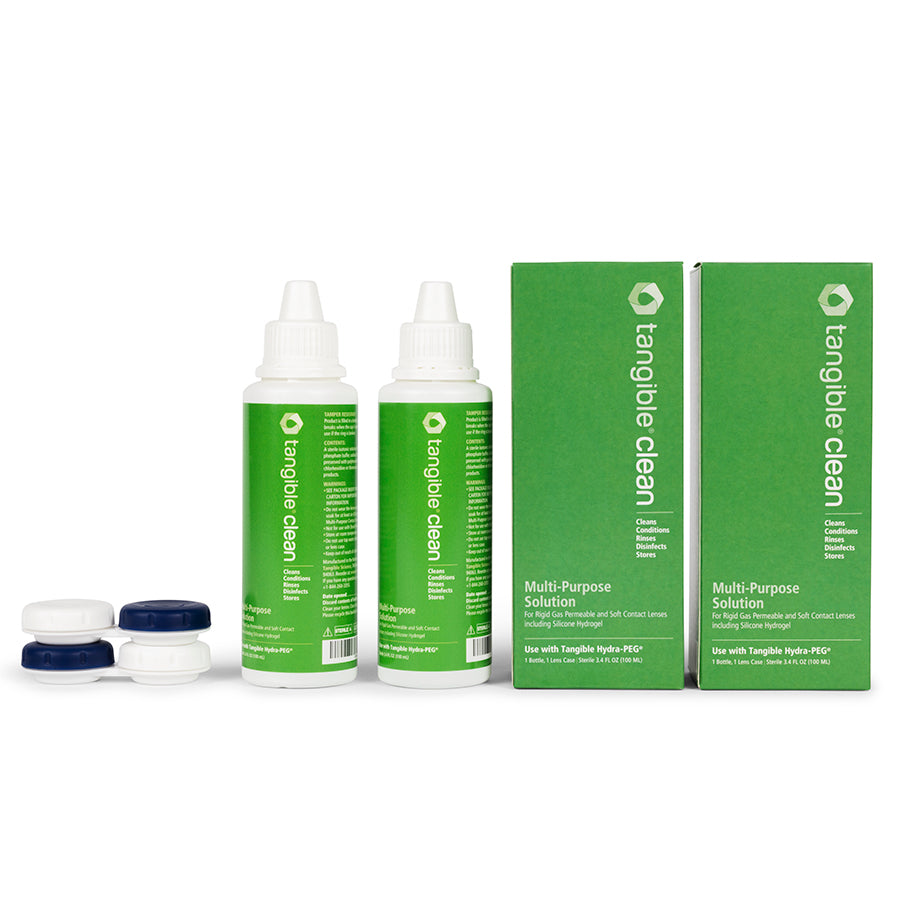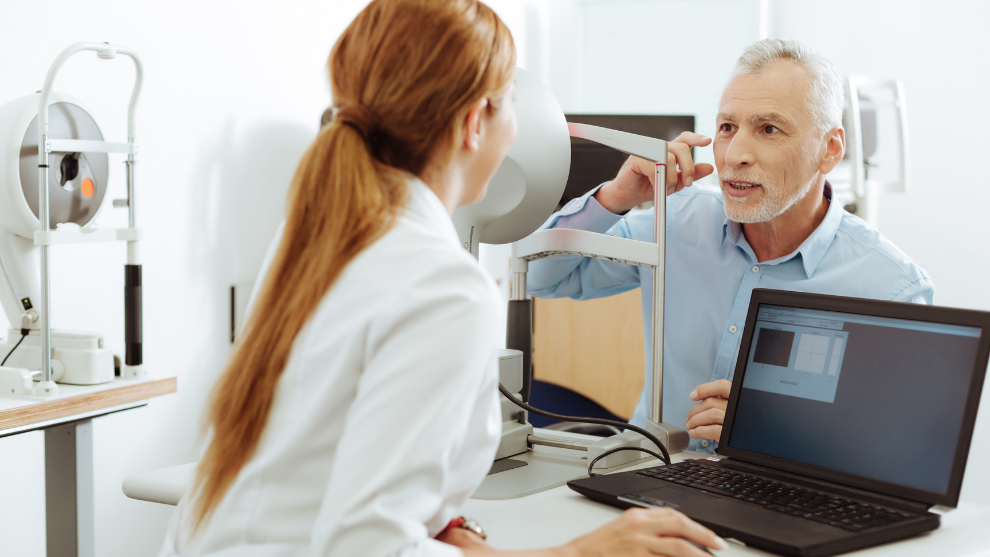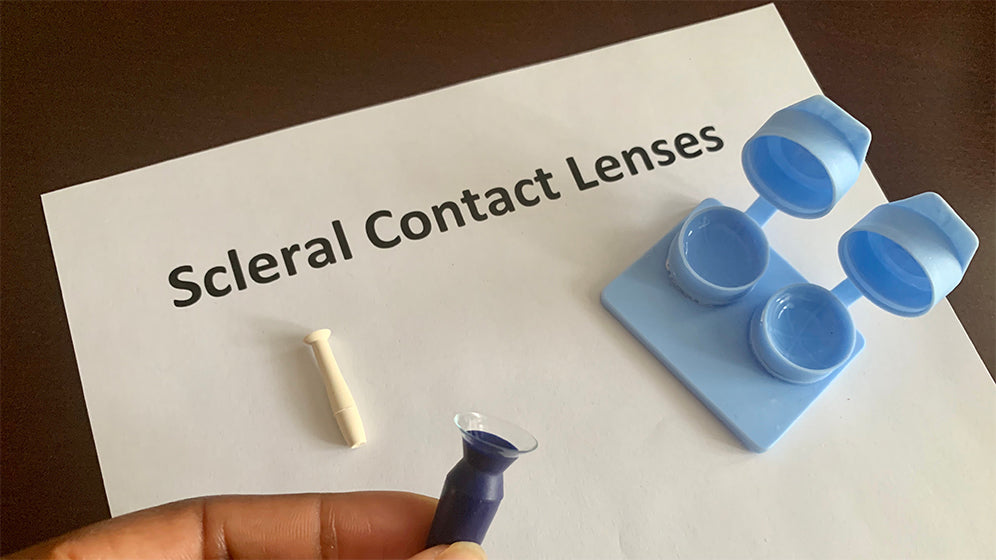Your cart is empty
Already have an account? Log in to check out faster.

We have been hearing from eye care practitioners who are seeing significant benefits from using Tangible Hydra-PEG in their practice, beyond making patients comfortable. One ECP who is seeing his practice benefit is Dr. Andrew Biondo, O.D., F.S.L.S., of Kirkwood Eye Associates in Kirkwood, Missouri. He shared his thoughts with us:
Eye care is challenging because you are being put to the test every day. If a patient cannot see, your work is immediately questioned. Eye care issues impact all waking hours. If a patient has to remove his or her lenses because they are getting foggy or because they are getting deposits, it is has a very immediate impact. We see issues with patients who come in with variable vision and patients who come in saying their rigid lenses only last so long before they fog up, and they're having to remove their lenses, especially in dry eye patients. If we can prevent those issues, then our focus can be more on making sure the lens fits properly and the patient sees as well as possible out of that lens. Those are the two things on which I should really be spending my time, not on how the tears are sticking to the surface of the lens.

In the beginning I was using Tangible Hydra-PEG as a problem solver. Since then I have definitely shifted and now view it as a prophylactic to prevent problems. For virtually any new patient who needs specialty lenses, Tangible Hydra-PEG is now automatically applied. I use it on approximately 75% of my GP lens patients and expect this number to rise as new fittings continue to be referred to the practice. It is especially beneficial to new scleral lens wearers because their eyes haven’t adapted to the device and one tends to see higher mucous production with a foreign body introduced into the eye, leading to deposits.
We haven’t had an advancement like this in the last 30 or 40 years since gas permeable materials were introduced. It improves comfort, but more importantly, it improves visual quality and deposit resistance – there is nothing that has come close to Tangible Hydra-PEG. It is a big deal and it has made a huge difference for a lot of patients.
Today, the only time I won’t prescribe it is if I have a patient who has been in a lens for many years without issue, although there may be an argument that an asymptomatic patient could still find benefit through improved optics and visual consistency.
There is nothing more valuable to an office than chair time. If you’re wasting an appointment due to wetting problems, you’re not only losing money, you’re also wasting the patient’s time. If I can make a small investment upfront in lens coating, and that saves or reduces chair time on a particular fit, then I have a higher return on investment on that fitting and on that particular patient. If I can remove the variable of wettability and deposit resistance from the equation, then it’s going to instantly reduce the amount of time I have to spend with that patient, and therefore reduce the cost.
I don’t think optometrists spend enough time thinking about how much staff time they waste dealing with these issues. If we focused more on efficiency, you could A) see more patients, and B) have a smoother, more well-rounded practice. This approach is equally important for patients, who have to spend time off work, gas money, and their own personal time to come in and see us when it’s something we could have prevented in the first place.
As eye care professionals, we typically charge a flat fee for fitting a patient for specialty lenses. Most of the time, you’re going to average three or four follow-ups on an initial fit. Anything more than that is more than you build into your fitting fee, so if you’re adding a visit or two because of wetting issues, you are reducing your margin and losing money.
I cover the minimal cost of Tangible Hydra-PEG myself rather than pass it on to the patient. If you look at the average revenue of an exam at your practice (typically several hundred dollars), giving up one exam spot to someone who has had wettability issues costs you a lot more than the few dollars you spend on the front-end by adding Tangible Hydra-PEG. The coating cost is generally about $15-$20 per lens from the labs I use. That is why the only time I’m not using it is with patients who are long-time scleral users who have never had any issues. Whether you shoulder the coating cost yourself or pass it on to the patient, you are still saving yourself time, you are generating more revenue, and you are saving the patient time, as well. So, I feel using Tangible Hydra-PEG is really the responsible thing to do for my patients and my practice.
A remake is not a direct cost to the practitioner, as the lab shoulders the cost, but it is an indirect cost to the practice for an extra fitting. A dropout is a direct cost in the loss of that ongoing revenue to the practice. I have seen an approximately 10 to 15 percent reduction in remakes. It may sound small, but that’s one out of every 10 patients who avoids an extra visit and the associated chair time. That equates to time and revenue that you would otherwise be giving up on your schedule that day. Even if it only adds up to a few patients a month, that’s still a tangible impact to the bottom line.
Tangible Hydra-PEG has also reduced lens dropout for us because it solves wetting issues and reduces maintenance schedules that may otherwise have led to patient discontinuation.
Specialty contact lenses offer a really big “wow factor” in the eyes of patients who struggled for a long time with their vision. Think about a patient who you have put all the effort into fitting properly and getting the power dialed in, but their vision is still variable because of surface issues. If you can alleviate that with something as simple as a surface coating, the patient experience is going to be that much further amplified. Anything you can do to make a patient’s vision better reflects better on you as a practitioner and reflects better on your practice team.
Dr. Biondo received no compensation from Tangible Science for participating in this interview. He has received compensation from Tangible Science associated with a case study and presentation of that case study in the past.
Dr. Andrew Biondo began practicing Optometry in 2010 and opened Kirkwood Eye Associates in 2015, with the objective of delivering an exceptional experience for his patients and community. He is a fellow of the Scleral Lens Education Society, serves as the Immediate Past President of the St. Louis Optometry Society and is a member of the American Academy of Orthokeratology and Myopia Control, the International Keratoconus Academy, and the American Optometric Association. He graduated with honors from the University Of Missouri St. Louis College Of Optometry.


If you're experiencing discomfort with your scleral lenses, initiating a discussion with your Eye Care Provider is essential. It may seem... Read more

Now that you have made it home with your scleral lenses, it’s time to care for them. Pretty simple, right?... Read more

Struggling with scleral lens care? You're not alone. This ultimate guide is your one-stop resource for everything you need to... Read more

If you're experiencing discomfort with your scleral lenses, initiating a discussion with your Eye Care Provider is essential. It may seem... Read more

Now that you have made it home with your scleral lenses, it’s time to care for them. Pretty simple, right?... Read more

Struggling with scleral lens care? You're not alone. This ultimate guide is your one-stop resource for everything you need to... Read more
Stay up to date on the top scleral and RGP lens tips from our expert, NCLE certified staff.